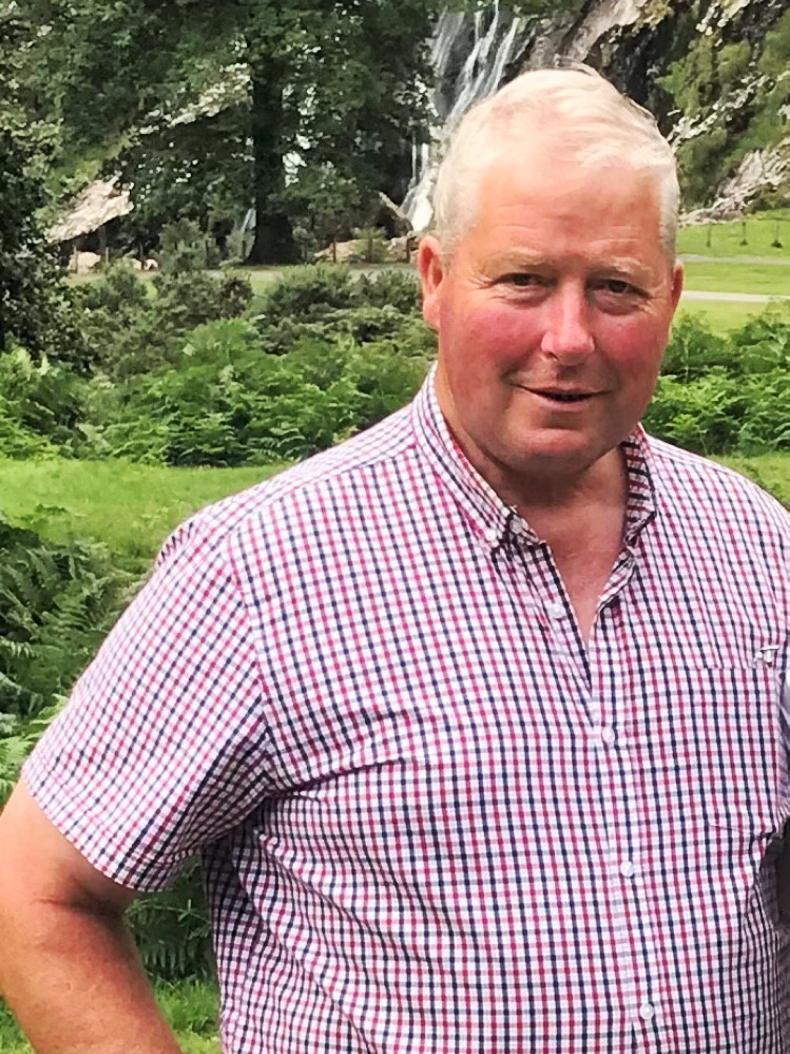Dairy beef is a growing sector within the beef industry in Ireland. In the last decade, the proportion of beef that is derived from the dairy herd has increased form 47% to almost 60% in 2021. This increase has come as the dairy herd has expanded from just over one million cows to over 1.6m expected to calve down this year.
As the dairy herd now stabilises, more cows will be mated to beef sires and so the quality of beef sire being used on the cow will have a huge effect on the quality of the calf for dairy beef farmer.
The aim behind the Thrive project, which is run by the Irish Farmers Journal with the support of the stakeholders; ICBF, Bord Bia, Kerry Agri, Aurivo, Dovea Genetics, Munster Bovine and Progressive Genetics, is to highlight the potential for profitable dairy-beef systems through the use of the best available beef genetics, alongside demonstrating best practice on the ground in terms of technical efficiencies.
However, another key objective of the programme is to highlight challenges within the sector and provide real-time, farm generated data to inform the debate for the future.
The Thrive demonstration farm, alongside the programme farmers right across the country, are central to communicating the messages and learnings from the project.
The demo farm, located in Carron, Cashel, Co Tipperary, is a 45ha farm owned by the Hally family. John Hally was a dairy farmer up until 2015 when he moved to drystock farming. Since 2019, John has been rearing calves and bringing them through to beef for the Thrive programme.
All the stock on the demonstration farm are owned by the Irish Farmers Journal with a contract-rearing agreement in place with the Hally family.
The aim is to slaughter as many stock as possible off grass at the end of the second grazing season at carcase weights ranging from 265kg to 340kg
Each spring, around 150 calves arrive on farm at between two and three weeks old and are reared through to beef at between 19- and 22-months of age.
The aim is to slaughter as many stock as possible off grass at the end of the second grazing season at carcase weights ranging from 265kg to 340kg.
Every decision made on the demo farm is commercially focused. Where calf prices are too high, the farm will step out of the market. This is the main reason for so many early-maturing stock on farm as calf price for late-maturing types tends to be higher.

John Hally.
Being in south-Tipperary, the farm enjoys a long grazing season while excellent grazing infrastructure and farm roadways allow for the long growing season to be utilised to the maximum.
The blueprint for the farm is simple – aim to achieve a 300kg carcase weight at between 19 and 22 months of age at the end of the second grazing season, from a largely grass-based diet.
Dairy beef is a growing sector within the beef industry in Ireland. In the last decade, the proportion of beef that is derived from the dairy herd has increased form 47% to almost 60% in 2021. This increase has come as the dairy herd has expanded from just over one million cows to over 1.6m expected to calve down this year.
As the dairy herd now stabilises, more cows will be mated to beef sires and so the quality of beef sire being used on the cow will have a huge effect on the quality of the calf for dairy beef farmer.
The aim behind the Thrive project, which is run by the Irish Farmers Journal with the support of the stakeholders; ICBF, Bord Bia, Kerry Agri, Aurivo, Dovea Genetics, Munster Bovine and Progressive Genetics, is to highlight the potential for profitable dairy-beef systems through the use of the best available beef genetics, alongside demonstrating best practice on the ground in terms of technical efficiencies.
However, another key objective of the programme is to highlight challenges within the sector and provide real-time, farm generated data to inform the debate for the future.
The Thrive demonstration farm, alongside the programme farmers right across the country, are central to communicating the messages and learnings from the project.
The demo farm, located in Carron, Cashel, Co Tipperary, is a 45ha farm owned by the Hally family. John Hally was a dairy farmer up until 2015 when he moved to drystock farming. Since 2019, John has been rearing calves and bringing them through to beef for the Thrive programme.
All the stock on the demonstration farm are owned by the Irish Farmers Journal with a contract-rearing agreement in place with the Hally family.
The aim is to slaughter as many stock as possible off grass at the end of the second grazing season at carcase weights ranging from 265kg to 340kg
Each spring, around 150 calves arrive on farm at between two and three weeks old and are reared through to beef at between 19- and 22-months of age.
The aim is to slaughter as many stock as possible off grass at the end of the second grazing season at carcase weights ranging from 265kg to 340kg.
Every decision made on the demo farm is commercially focused. Where calf prices are too high, the farm will step out of the market. This is the main reason for so many early-maturing stock on farm as calf price for late-maturing types tends to be higher.

John Hally.
Being in south-Tipperary, the farm enjoys a long grazing season while excellent grazing infrastructure and farm roadways allow for the long growing season to be utilised to the maximum.
The blueprint for the farm is simple – aim to achieve a 300kg carcase weight at between 19 and 22 months of age at the end of the second grazing season, from a largely grass-based diet.







 This is a subscriber-only article
This is a subscriber-only article











SHARING OPTIONS: